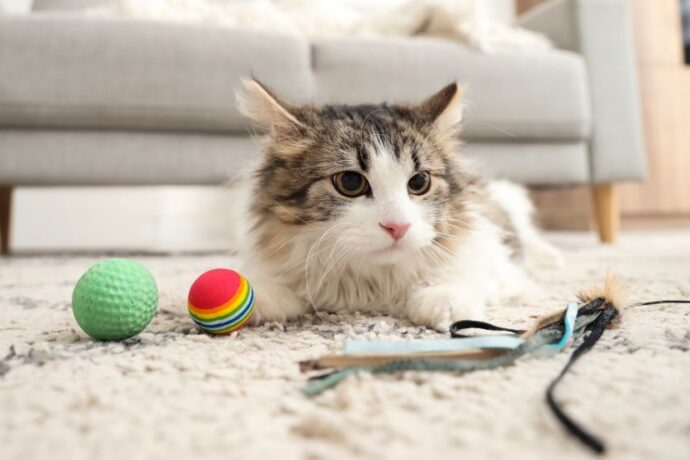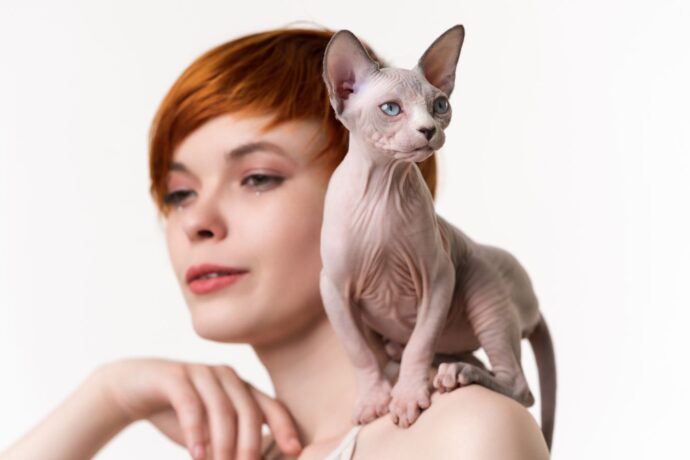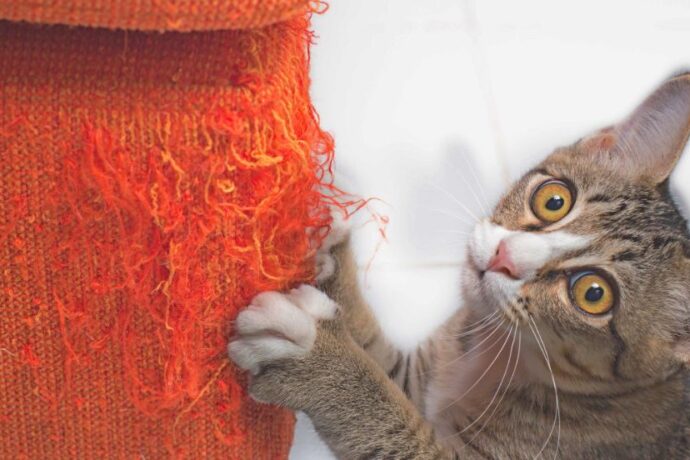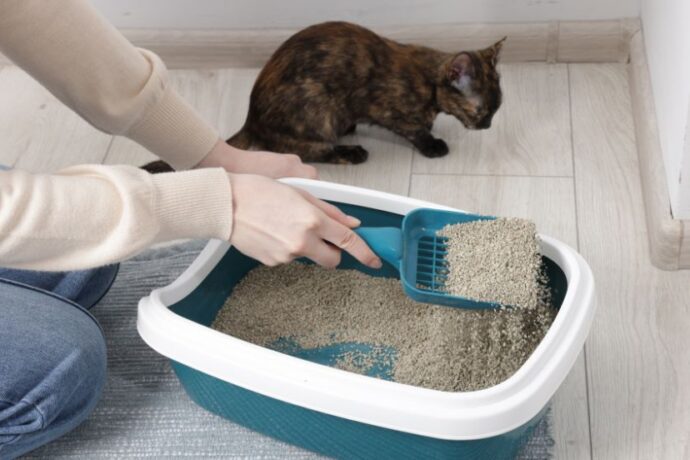Every cat scratches occasionally—it’s part of normal grooming and play. But when your cat can’t stop licking, biting, or scratching their skin, it’s a red flag that something more serious might be going on. Persistent itching, also called pruritus, can point to underlying issues like allergies, parasites, or infections. As a cat parent, knowing when to worry (and when it’s just a mild irritation) can make a world of difference in your cat’s comfort and health.
Understanding Feline Itch: What’s Happening Beneath the Fur
Itching in cats isn’t a disease—it’s a symptom triggered by inflammation or irritation of the skin. The sensation is controlled by nerve endings that send signals to the brain, creating the urge to scratch or groom excessively.
In mild cases, your cat might simply scratch an itch and move on. But if it’s happening constantly, you may notice hair loss, redness, scabs, or even open sores. Chronic itching can quickly spiral into skin infections or behavioral stress if left untreated.
According to the Journal of Feline Medicine and Surgery, persistent itching is one of the most common dermatological complaints in cats, often linked to allergies, parasites, or environmental triggers (1).
Top Reasons Your Cat Can’t Stop Scratching
If your cat’s scratching habits have gone from cute to concerning, here are the most common causes veterinarians see:
1. Fleas and Other Parasites
Fleas are the number one cause of itchy cats. Even indoor cats can pick them up from visitors, other pets, or screened windows. Flea bites cause intense itching—especially if your cat has flea allergy dermatitis (FAD), an allergic reaction to flea saliva.
Other parasites like mites (ear mites or mange), lice, or ticks can also lead to relentless scratching.
2. Allergies (Environmental, Food, or Contact)
Just like humans, cats can develop allergies to things around them. Common culprits include pollen, dust mites, mold, cleaning agents, or even certain fabrics.
Food allergies, particularly to proteins like chicken, beef, or dairy, can also show up as skin irritation rather than digestive issues. Cats with allergies may lick or bite their paws, belly, or tail base repeatedly.
3. Skin Infections and Yeast Overgrowth
Bacterial or fungal infections often develop after prolonged scratching damages the skin. Yeast infections, in particular, thrive in warm, moist areas like the ears, armpits, or folds of skin. These infections can cause a greasy coat, foul odor, and reddish-brown discharge.
4. Dry Skin or Over-Grooming
Indoor heating, low humidity, or harsh shampoos can lead to dry, flaky skin. Some cats also over-groom due to anxiety or boredom, mistaking emotional stress for an itch they can’t reach. Over time, this can result in bald patches and irritated skin.
5. Hormonal or Immune-Related Conditions
Less commonly, hormonal imbalances (like hyperthyroidism) or autoimmune diseases can cause chronic itching. These conditions often require bloodwork and advanced diagnostics from a vet to confirm.
When Scratching Crosses the Line: Is It an Emergency?
An occasional scratch is harmless—but persistent or intense itching warrants attention. You should be concerned if you notice:
- Raw, red, or bleeding skin
- Hair loss or bald spots
- Constant licking or biting in one area
- Head shaking or ear scratching (possible ear mites or infection)
- Scabs, crusts, or foul odor
- Changes in mood or appetite
If your cat’s skin looks inflamed, or if scratching interferes with eating or sleeping, it’s time to act. Severe itching can indicate underlying health problems that won’t resolve without treatment.
Knowing When to Call Your Veterinarian
If your cat’s scratching persists for more than a few days or you spot sores, don’t delay a vet visit. Your veterinarian will likely perform a physical exam, skin scraping, or flea comb test to identify external parasites. If those are ruled out, further diagnostics—such as allergy testing, fungal cultures, or bloodwork—may be needed.
Prompt veterinary care is especially important for kittens, senior cats, or cats with preexisting conditions. Early intervention can prevent infection and help pinpoint whether the problem is skin-related or systemic.
How Vets Treat Itchy Cats: From Fleas to Food Allergies
Treatment depends entirely on the cause. Here’s how vets typically approach itchy cats:
- Parasite control: Prescription flea preventatives or medicated shampoos target fleas, mites, or lice. Even if you don’t see fleas, treatment is often recommended as a first step.
- Anti-allergy medications: Antihistamines, corticosteroids, or immune-modulating drugs like Cytopoint or Atopica can reduce inflammation and relieve itching.
- Diet trials: If a food allergy is suspected, your vet may suggest a novel protein diet (such as duck or venison) for 8–12 weeks.
- Antibiotics or antifungals: Used to treat secondary bacterial or yeast infections caused by excessive scratching.
- Soothing topical therapies: Medicated wipes, sprays, or shampoos with oatmeal, aloe, or chlorhexidine can calm irritated skin.
It’s crucial to follow your vet’s treatment plan fully—stopping medications early or switching diets too soon can cause symptoms to return.
Helping Your Cat Heal: Long-Term Recovery and Skin Management
Once the immediate itch subsides, your cat’s skin needs time to recover. Keep the environment clean, flea-free, and low in allergens. Regular brushing helps remove loose fur, distribute natural oils, and lets you check for early signs of irritation.
Adding omega-3 fatty acid supplements to your cat’s diet can also promote skin health. According to a study in Veterinary Dermatology, omega-3s may reduce inflammation and improve coat quality in cats with chronic dermatitis (2).
For cats prone to anxiety-induced over-grooming, environmental enrichment—like puzzle feeders, climbing spaces, and regular playtime—can help reduce stress-related behaviors.
Preventing Future Flare-Ups: Keeping the Itch Away
- Prevention is all about routine care and awareness.
- Use year-round flea preventatives, even for indoor cats.
- Feed a high-quality diet with essential fatty acids to support skin health.
- Avoid harsh grooming products or scented cleaners that may irritate the skin.
- Monitor humidity levels indoors during dry seasons.
- Schedule regular vet checkups—early detection saves both discomfort and expense.
If your cat has a history of skin problems, keeping a journal of flare-ups (including diet and environmental changes) can help your vet identify triggers faster.
Science Says: Why Cats Itch and What Helps
Veterinary dermatology research emphasizes that itching in cats is multifactorial—rarely caused by just one issue. Studies published in Frontiers in Veterinary Science show that up to 80% of chronic feline itching cases have allergic or environmental roots, while the remainder often involve parasites or infections (3)(4).
Understanding that scratching is a symptom, not a standalone condition, is essential. The best results come from addressing the root cause—through diet, environmental control, and consistent veterinary guidance.
FAQ’s Frequently Asked Quetions
1. My cat scratches, but I don’t see fleas. Could there still be a problem?
A. Yes. Cats groom frequently and can remove visible fleas, but the allergic reaction from flea bites can continue long after the fleas are gone. Preventive treatment is still necessary.
2. Can stress really make my cat’s skin itch?
A. Absolutely. Cats may over-groom or scratch more when anxious. Changes in routine, new pets, or boredom can all trigger stress-related itching.
3. Are home remedies safe for itchy cats?
A. While mild oatmeal baths or coconut oil can soothe irritation, always consult your vet first. Some essential oils and over-the-counter creams are toxic to cats.
Conclusion: From Itch to Ease
An itchy cat isn’t just uncomfortable—it’s trying to tell you something. Whether it’s fleas, allergies, or something deeper, persistent scratching deserves attention. With prompt veterinary care, a proper diagnosis, and consistent management, most cats recover quickly and return to their playful, purr-filled selves.
The bottom line: don’t wait and hope the scratching stops on its own. Understanding what’s behind your cat’s itch is the first step to keeping them happy, healthy, and comfortable.
References:
1. Cutaneous Hypersensitivity Dermatoses in the Feline Patient
2. A Randomised-Controlled Study Demonstrates
3. Reactions to environmental allergens in cats with feline lower airway disease
4. Itch in dogs and cats











